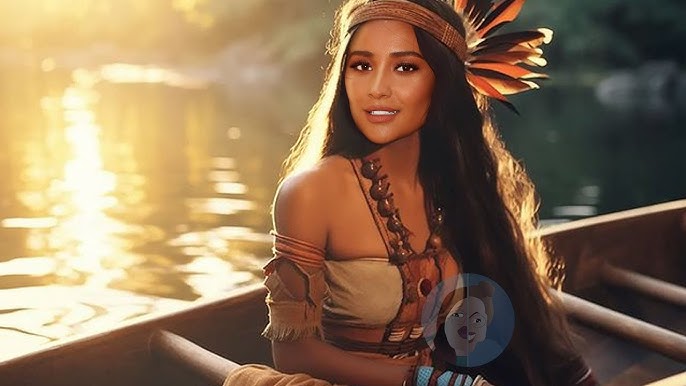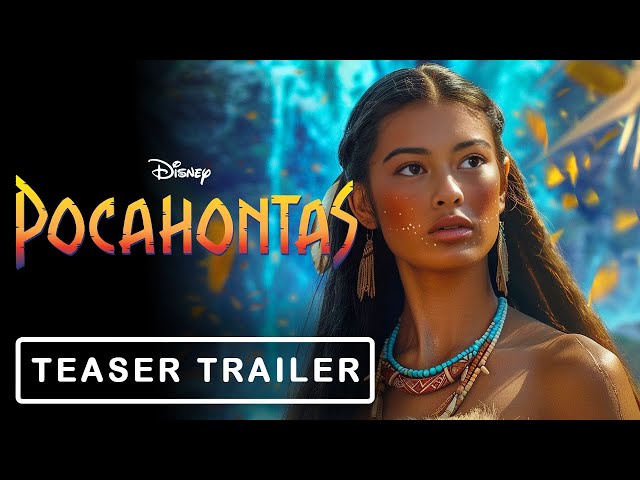Pocahontas: Live Action (2025)

🎬 Pocahontas: Live Action (2025) – A Visually Spectacular Reimagining
In 2025, Disney brings to life one of its most beloved animated classics in a visually stunning and historically rich live-action adaptation of Pocahontas. With a staggering production budget of $200 million and an additional $100 million allocated to marketing, this film promises to be a cinematic experience like no other. With expectations set high, the film is projected to gross $1.2 billion globally, with merchandise sales and streaming rights further contributing to an anticipated total revenue of $1.7 billion.
Directed by a visionary filmmaker known for bringing iconic stories to life, Pocahontas: Live Action delivers not just breathtaking visuals but also a deepened, historically accurate narrative that stays faithful to the spirit of the original animated film while adding layers of cultural complexity and personal conflict.
A New Era for Pocahontas
At the heart of this live-action adaptation is the portrayal of Pocahontas, the powerful Native American woman who bridged the gap between two very different worlds—the indigenous Powhatan tribe and the English settlers who arrived on their shores. In a departure from the animated version, Pocahontas is brought to life by a Native American actress—a casting choice that honors the film’s cultural significance and ensures a more authentic representation of the character and her people.
The film portrays Pocahontas not just as a love interest, but as a resilient leader of her people. She is strong, wise, and deeply connected to the natural world around her. The live-action adaptation highlights her leadership role within the Powhatan tribe, showing her as a woman who holds a deep sense of responsibility to her people and their way of life. Rather than the carefree, whimsical figure seen in the animated version, Pocahontas is depicted as a determined figure who faces difficult choices, torn between her duties to her people and her connection with an outsider, John Smith.
A Deeper, Historically Accurate Storyline
This adaptation goes beyond the familiar romantic tale between Pocahontas and John Smith. While their relationship remains a central focus, the film delves into the cultural conflict and misunderstandings that arose between the English settlers and the Powhatan people. The film offers a deeper exploration of the historical context surrounding the first encounters between these two cultures, showcasing the clash of values, ideologies, and survival instincts that defined the relationship between Native Americans and European colonizers.
The Powhatan tribe is shown as a complex and sophisticated society, with rich traditions, spiritual beliefs, and a deep connection to the land. The adaptation highlights Pocahontas’ position not only as a daughter but as a key figure in her community, one who must navigate the increasingly tense environment brought on by the presence of the settlers. The film does not shy away from the devastating impact of colonization, giving weight to the conflicts and challenges Pocahontas faced in her role as a mediator.
On the other hand, the English settlers are portrayed as a group of individuals with conflicting interests and emotions. While some settlers arrive with the hope of peaceful coexistence and mutual respect, others are driven by greed and a desire to control the land. The story of John Smith, portrayed with great emotional depth, is explored as a man torn between his loyalty to the English crown and his growing admiration for Pocahontas and her people.
Pocahontas and John Smith: A Relationship Built on Conflict and Understanding
At the core of Pocahontas: Live Action is the relationship between Pocahontas and John Smith. Their love story, while central to the narrative, is not one of simple romanticism. Instead, it is an exploration of cultural exchange, miscommunication, and the human capacity for empathy in the face of adversity. The film portrays their growing connection in a much more complex light, showing how they are forced to confront their differing backgrounds and worldviews while attempting to find common ground.
John Smith, portrayed with an emotional depth and moral conflict, finds himself in a precarious situation. As a soldier and explorer, his initial mission is to secure land and resources for the English settlers, yet his time spent with Pocahontas opens his eyes to the rich culture and spirituality of the Powhatan people. The two share a unique bond as they teach one another about their respective cultures. Pocahontas, in turn, learns about the English settlers’ struggles and aspirations, questioning the motivations behind their actions.
Their connection is not without tension. As their relationship evolves, the political and cultural pressure mounts. John Smith’s loyalty to his people is tested when he is forced to make difficult choices that could endanger Pocahontas and her tribe. The heart-wrenching scenes that arise as their cultures collide are a poignant reminder of the pain and destruction caused by colonization. Pocahontas, though deeply in love with Smith, must make choices that will preserve her people’s future—even if it means sacrificing her personal desires.
The Film’s Visual Spectacle
With a $200 million production budget, the film promises to be an audiovisual marvel that brings the beauty of Pocahontas’ world to stunning life. From the lush, vibrant Virginia wilderness to the towering, bustling English ships, the film’s cinematography is breathtaking. The Powhatan village is depicted with rich authenticity, showcasing the tribe’s strong connection to nature and the land. From the majestic forests to the serene waters of the Chesapeake Bay, the natural world plays a vital role in both the narrative and the visuals of the film.
The filmmakers spared no expense in bringing the landscape and cultural authenticity of the period to life, with meticulously designed costumes, set designs, and CGI effects that transport viewers into the heart of the 17th-century world of Pocahontas. The film’s breathtaking visual effects blend seamlessly with practical effects to create a grounded yet fantastical experience, where nature’s beauty is a constant and powerful presence.
The musical score is equally remarkable, bringing a fresh take on the iconic themes from the animated film, while incorporating elements of traditional Powhatan music, English folk songs, and grand orchestral compositions. The music becomes a vital part of the storytelling, enhancing the emotional weight of each scene, whether it’s the deep sadness of Pocahontas’ personal sacrifices or the intense clashes between the settlers and the indigenous people.
The Powhatan Tribe and the Larger Historical Context
Beyond Pocahontas and her relationship with John Smith, the film sheds light on the Powhatan tribe’s struggle to maintain their land and way of life in the face of the English settlers’ invasion. The tribe’s leaders, warriors, and elders are portrayed with great respect and depth, and the story emphasizes their efforts to protect their homeland from encroachment, disease, and the disruption of their traditional lifestyle.
The film’s portrayal of Pocahontas’ family and the role of her father, Chief Powhatan, adds another layer to the story. As a leader, Powhatan must balance the need for peace with the reality of the settlers’ aggressive expansion. The complexities of his leadership are explored as he weighs the potential consequences of negotiating with the English and the risks of going to war to protect his people.
While the film focuses on the personal and emotional journey of Pocahontas, it also shines a light on the larger historical context of the colonization of the Americas, touching on the devastating effects it had on the indigenous populations. The film does not shy away from the violence and suffering that colonization inflicted on the Powhatan tribe, and it aims to show the tragic consequences of the encounter between Pocahontas and John Smith.
Cultural Sensitivity and Authentic Representation
One of the most notable aspects of Pocahontas: Live Action is its commitment to authentic representation. The filmmakers worked closely with Native American historians, cultural consultants, and language experts to ensure that the portrayal of the Powhatan tribe is accurate and respectful. Pocahontas herself is played by a Native American actress, giving the film an added level of authenticity and sensitivity to the cultural significance of the story.
The film also incorporates the Powhatan language, with native dialogue used in key moments, allowing the audience to hear the beauty and rhythm of the language that was spoken by Pocahontas and her people. This inclusion adds depth to the narrative, highlighting the rich cultural heritage of the Powhatan tribe and the tragic loss of their language and traditions due to colonization.
A Legacy Reimagined
Pocahontas: Live Action is a bold reimagining of the classic Disney tale. While the core themes of love, cultural conflict, and nature’s beauty remain, the film adds historical depth, emotional resonance, and cultural authenticity to create a richer and more impactful story. With a talented cast, breathtaking visuals, and a carefully crafted narrative, the film is poised to be one of Disney’s most ambitious and successful live-action adaptations.
It’s not just a story of Pocahontas and John Smith—it’s a story of identity, sacrifice, and the fight to preserve one’s culture in the face of overwhelming odds. As Pocahontas stands at the crossroads of two worlds, the film explores her journey of self-discovery, leadership, and the difficult choices she must make to protect her people and their way of life.
In the end, Pocahontas: Live Action is more than just a love story—it’s a powerful reminder of the resilience of indigenous peoples and the enduring power of their culture, even in the face of adversity. Disney’s latest live-action adaptation promises to be a visually stunning and emotionally profound journey through history, love, and the fight for survival.











